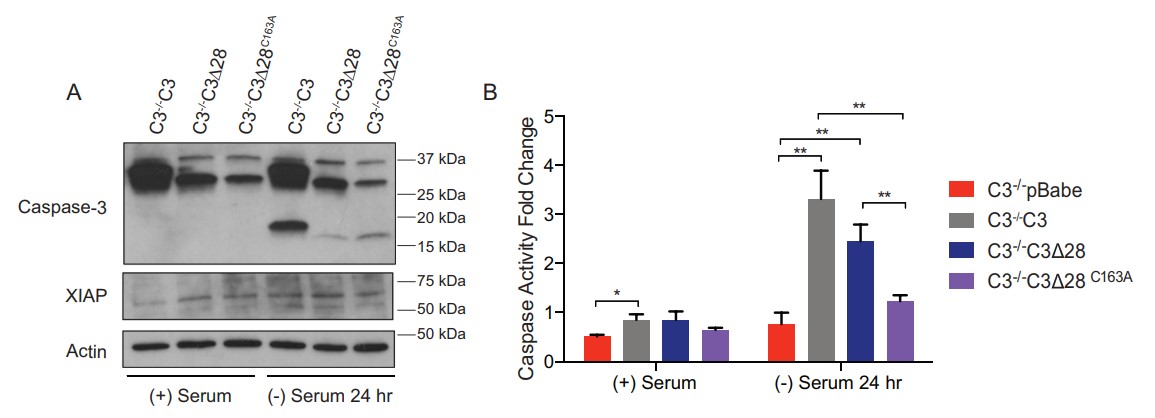Caspase-3 Deficient MEFs with Mutant Caspase-3 Re-Introduced
Application
Mouse embryonic fibroblast (MEF) line deficient in caspase-3 that are reconstituted with constitutively expressed mutant versions of the protease.
Key Benefits
- An immortalized caspase-3-deficient MEF cell line.
- Tool to study protease induced apoptosis.
Technical Summary
Emory inventors have discriminated a previously unknown role of the prodomain region of caspase-3. By reintroducing specific caspase mutations into an immortalized MEF cell line deficient in caspase-3 activity, investigators found a genomic region that rendered these cells more susceptible to death signals. Furthermore, through creating point mutations within the prodomain region of caspase-3, the investigators found amino acid D9 to be vital for the proper function of the enzyme.
Image: Generation of stable cell lines expressing mutant Caspase-3

Developmental Stage
- Stable cell line C3−/−C3∆28, which lacks the prodomain but retains the catalytically active C163 site created.
- Stable cell line C3−/−C3∆28C163A, which lacks the prodomain and contains the mutation C163A, rendering it catalytically inactive created.
Publication: Ponder, K.G., Boise, L.H. (2019). Cell Death Discovery 5(1), 56.
Patent Information
| App Type |
Country |
Serial No. |
Patent No. |
File Date |
Issued Date |
Patent Status |
|
|

